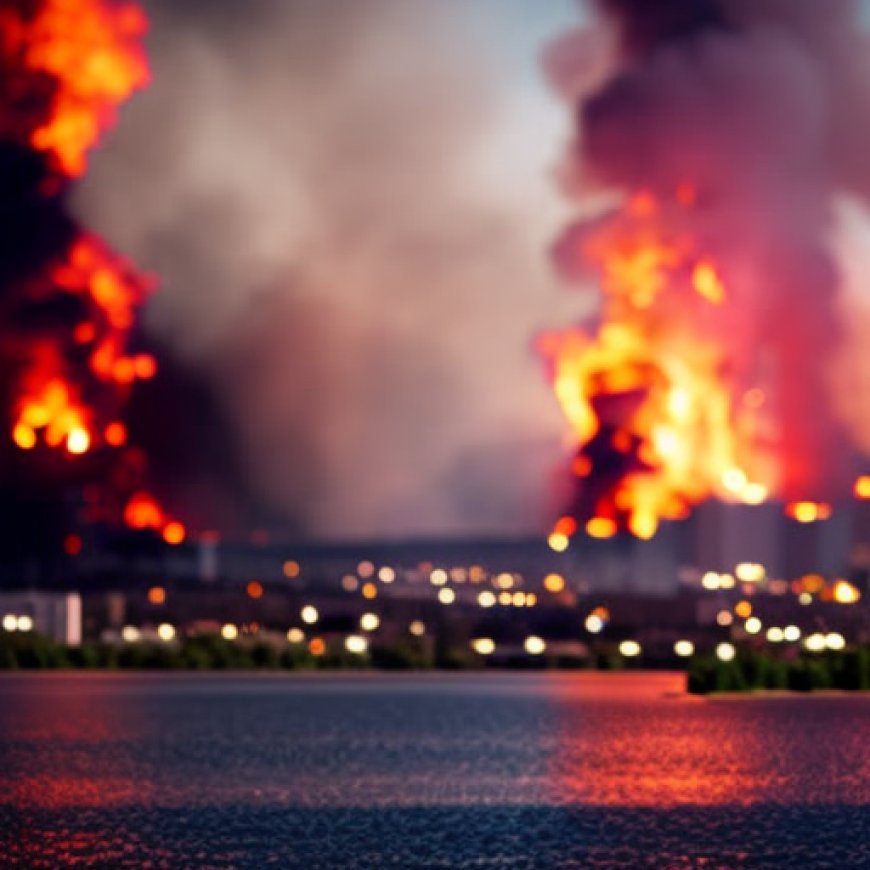Canadian Wildfires Are Threatening The Air In These U.S. Cities—Again
Canadian Wildfires Are Threatening The Air In These U.S. Cities—Again Forbes


Topline
Wildfires across western Canada have prompted air quality alerts and evacuations, as parts of the Central U.S. are threatened Monday with unhealthy pollution levels again a year after record-breaking flames enveloped most of the East Coast in smoke.
Key Facts
- The Minnesota Pollution Control Agency issued an air quality alert Monday for the state’s southern region, affecting conditions In Minneapolis, St. Paul and Rochester as smoke travels south toward Iowa, though the agency warned air pollution across the state would reach a “level considered unhealthy for everyone.”
- Parts of northern Wisconsin—including Eau Claire and Green Bay—have “unhealthy” air quality, according to the Wisconsin Department of Natural Resources.
- According to the Environmental Protection Agency’s AirNow tracker, “unhealthy” air quality caused by smoke has been recorded across eastern Montana, the Dakotas and throughout most of Minnesota and Wisconsin.
- Air quality that is unhealthy for sensitive groups—people with asthma, heart or lung disease—has also been recorded in northern Nebraska and Iowa, according to the agency.
Get Forbes Breaking News Text Alerts: We’re launching text message alerts so you’ll always know the biggest stories shaping the day’s headlines. Text “Alerts” to (201) 335-0739 or sign up here.
Surprising Fact
Minneapolis briefly overtook Jakarta, Indonesia, as the most polluted major city in the world, according to the global air quality tracker IQAir. The city’s level of PM 2.5—airborne particles less than 2.5 microns in diameter—stood at 171, an “unhealthy” level that should prompt residents to shorten the amount of time outdoors, the EPA said.
Tangent
There are 146 fires burning across Canada as of Monday morning, 39 of which are “out of control” and 93 that are under control, according to Canada’s fire agency. Most of these fires are affecting British Columbia (50) and Alberta (45). Evacuation orders were SDGs, Targets, and Indicators
SDG 3: Good Health and Well-being
SDG 11: Sustainable Cities and Communities
SDG 13: Climate Action
Table: SDGs, Targets, and Indicators
| SDGs | Targets | Indicators |
|---|---|---|
| SDG 3: Good Health and Well-being | Target 3.9: By 2030, substantially reduce the number of deaths and illnesses from hazardous chemicals and air, water, and soil pollution and contamination. | Air quality alerts and recorded levels of air pollution caused by smoke. |
| SDG 11: Sustainable Cities and Communities | Target 11.6: By 2030, reduce the adverse per capita environmental impact of cities, including by paying special attention to air quality and municipal and other waste management. | Air quality alerts and recorded levels of air pollution in cities. |
| SDG 13: Climate Action | Target 13.1: Strengthen resilience and adaptive capacity to climate-related hazards and natural disasters in all countries. | Number of wildfires and their control status. |
Analysis
1. Which SDGs are addressed or connected to the issues highlighted in the article?
The issues highlighted in the article are connected to SDG 3 (Good Health and Well-being), SDG 11 (Sustainable Cities and Communities), and SDG 13 (Climate Action).
2. What specific targets under those SDGs can be identified based on the article’s content?
Based on the article’s content, the specific targets identified are:
– Target 3.9: By 2030, substantially reduce the number of deaths and illnesses from hazardous chemicals and air, water, and soil pollution and contamination.
– Target 11.6: By 2030, reduce the adverse per capita environmental impact of cities, including by paying special attention to air quality and municipal and other waste management.
– Target 13.1: Strengthen resilience and adaptive capacity to climate-related hazards and natural disasters in all countries.
3. Are there any indicators mentioned or implied in the article that can be used to measure progress towards the identified targets?
Yes, there are indicators mentioned or implied in the article that can be used to measure progress towards the identified targets. These indicators include:
– Air quality alerts and recorded levels of air pollution caused by smoke.
– Number of wildfires and their control status.
These indicators provide measurable data on the state of air quality, pollution, and wildfire occurrences, which can be used to track progress towards the identified targets.
By addressing these issues and working towards achieving the targets under these SDGs, countries can contribute to improving public health, creating sustainable cities, and mitigating the impacts of climate change.
Copyright: Dive into this article, curated with care by SDG Investors Inc. Our advanced AI technology searches through vast amounts of data to spotlight how we are all moving forward with the Sustainable Development Goals. While we own the rights to this content, we invite you to share it to help spread knowledge and spark action on the SDGs.
Fuente: forbes.com

Join us, as fellow seekers of change, on a transformative journey at https://sdgtalks.ai/welcome, where you can become a member and actively contribute to shaping a brighter future.







